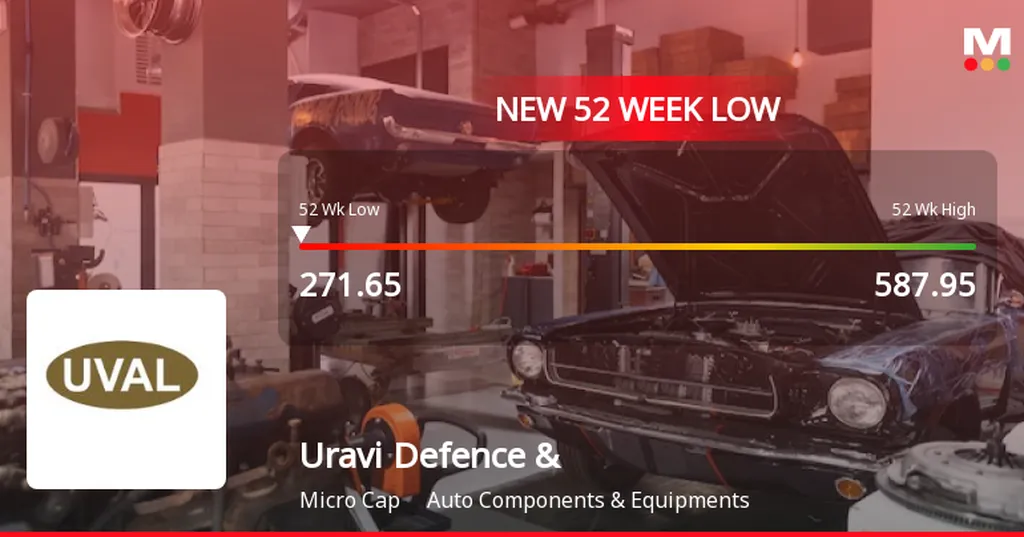Uravi Defence & Technology’s recent stock performance has raised serious concerns about its financial health and long-term viability in the defence sector. The company’s shares have plummeted to a new 52-week low of Rs. 258.1, marking a 32.83% decline over just eight days. This sharp drop underscores broader challenges within the company, including weak fundamentals and a troubling debt burden.
The stock opened with a 4.99% loss and has remained at this low throughout the trading day, reflecting persistent investor pessimism. Over the past year, Uravi’s shares have declined by a staggering 43.89%, far outpacing the Sensex’s relatively modest loss of 3.66%. This divergence highlights the company’s struggles in a sector that has otherwise shown resilience.
Analysts point to Uravi’s weak long-term fundamentals as a key driver of its decline. The company has reported a -7.98% compound annual growth rate (CAGR) in operating profits over the last five years, signaling stagnation in its core business. Additionally, its high Debt to EBITDA ratio of 3.49 times raises serious questions about its ability to manage debt obligations. A high Debt to EBITDA ratio often indicates financial strain, as it suggests that the company may struggle to generate sufficient cash flow to cover its debt repayments.
Further compounding these concerns is Uravi’s low Return on Equity (ROE) of just 5.69%, a metric that measures profitability relative to shareholders’ equity. A low ROE typically indicates that the company is not efficiently utilising its capital to generate profits, a red flag for investors seeking sustainable growth.
The company’s underperformance against its sector by 4.48% adds another layer of concern. While peers may be navigating similar macroeconomic challenges, Uravi’s inability to keep pace suggests deeper operational or strategic issues. Its stock is currently trading below its 5-day, 20-day, 50-day, 100-day, and 200-day moving averages, reinforcing the downward trend and casting doubt on any near-term recovery.
For investors, Uravi’s recent performance serves as a cautionary tale about the risks of investing in companies with weak fundamentals, particularly in a sector as competitive and capital-intensive as defence. The company’s struggles may also signal broader challenges in the Indian defence industry, where financial discipline and operational efficiency are increasingly critical for long-term success.
As Uravi grapples with these issues, the question remains whether it can implement meaningful reforms to restore investor confidence and stabilise its financial position. Without significant improvements, the company risks further declines, potentially leaving it vulnerable to market exits or strategic acquisitions. For now, the market’s verdict is clear: Uravi Defence & Technology is facing an uphill battle to regain its footing.

